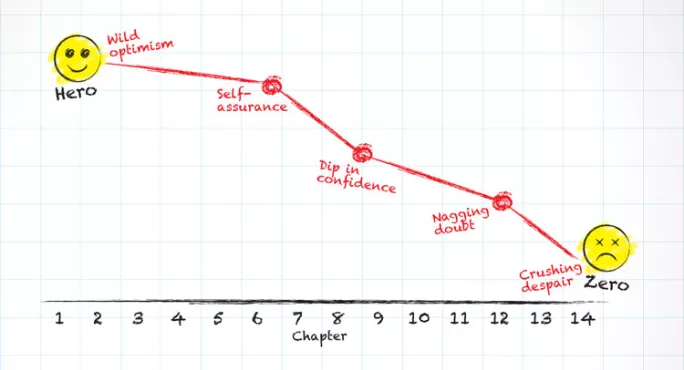In 1979, I drew Mickey Mouse in my maths O-level. Or rather, I only drew Mickey Mouse in my maths O-level.
I’d practised for weeks, so I thought the resulting U grade was harsh. Then I applied for teacher training at 37 and had to sit maths GCSE. I managed a B. It turns out that answering the questions pays dividends. But I’m still no Pythagoras.
So it would be fair to say that using graphs for teaching English didn’t come naturally to me at first. But I liked the idea immediately. The visual representation of literary concepts makes a change from a mind map or bullet-pointed list.
But how does it work?
1. Track a character’s emotions
In Chapter 11 of Robert Cormier’s Heroes, Francis Cassavant journeys from optimism to despair. Students make up the graph’s horizontal axis with chapter pages and label the vertical axis “optimism to despair”, starting with descriptions such as “wild optimism” and “nagging optimism” before plunging to “crushing despair”. They then plot a point for each page, adding quotations to the graph as evidence for their decisions.
Set an essay title first, if you like: “How does Cormier present Francis’ emotions?” Pupils can use the graph to plan their essay.
2. Chart the strength of chapter endings
In many novels, the cliffhangers at the end of chapters increase in intensity, so why not chart them, labelling the horizontal axis “chapter numbers” and the vertical ‘“tension level”? Use numbered levels, descriptions or - more fun - emoticons.
Robert Swindells’ Stone Cold is good for this. Half the class could track the protagonist Link’s chapters and the other half record those of another character, Shelter. The exercise can spark thoughtful discussion: what makes an effective cliff-hanger? How does an author keep you turning pages?
3. Find repeated or paralleled ideas
Use a graph to plot repetition of events that suggest inevitability. In Of Mice and Men, Lennie’s fascination with soft things begins with a woman’s dress, then we see him petting mice, puppies and rabbits in his dreams of the farm before, unwisely, Curley’s wife offers him her hair to stroke. Label - or illustrate - the horizontal axis with the various soft things and designate the vertical axis “level of tension” or “foreshadowing intensity”, again finding quotations to support the plotted points.
4. Track change in characters
In Heroes, Larry LaSalle’s hero status takes a dive. Monitor this on a graph. For lower-ability students, provide quotations and page numbers for them to plot; higher-ability pupils can do their own research. In To Kill a Mockingbird, Boo Radley’s transformation is the reverse, from rumoured monster to hero. Students can see which events illustrate the change. For an extra challenge, plot two different-coloured lines to illustrate comparisons and contrasts. Health warning: set this up carefully. The first time I tried dual plotting, my limited maths skills and their bewilderment resulted in a so-glad-this-wasn’t-observed lesson.
Fran Hill blogs at ilurveenglish.blogspot.com




